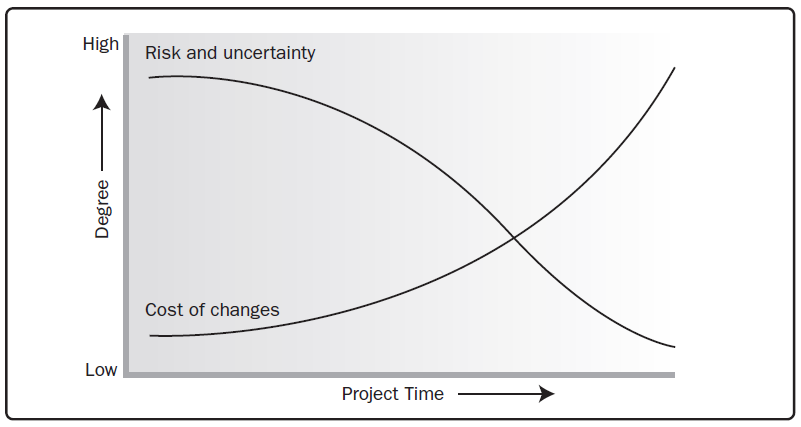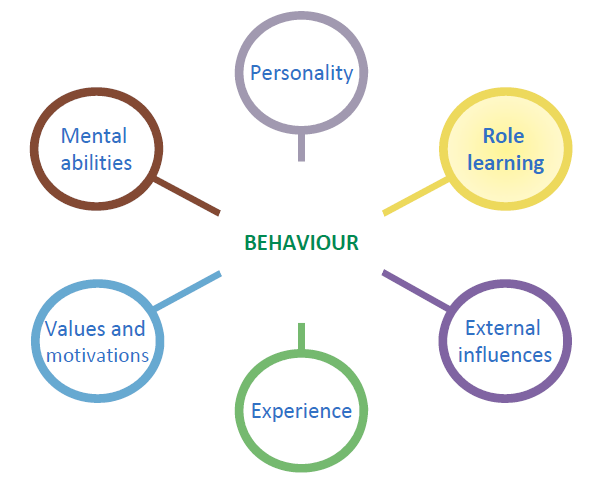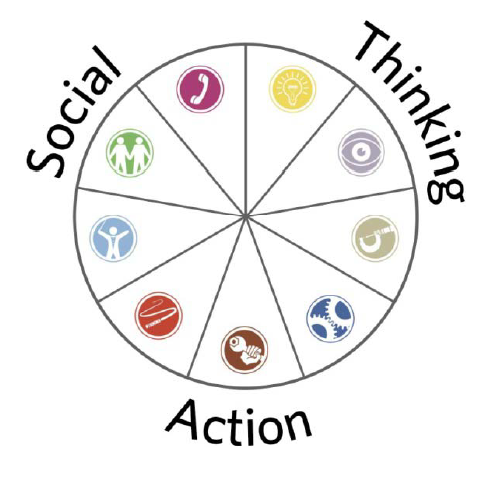Belbin Team Roles
Contents |
Abstract
This article will describe and discuss the theory of the Belbin Team Roles. The theory will be related to the management challenge of putting together the most optimal team to carry out a project. It will also discuss the possibility of analysing an already established team, and using the Belbin Team Roles to identify inadequacies that it will then be possible to take actions towards making up for when planning and carrying out the project work.
The work will be based on a number of sources including Project Management Institute (2013). A Guide to the Project Management Body of Knowledge [1]
The Big Idea
According to PMBOK Guide, a project is defined as “a temporary endeavour undertaken to create a unique product, service or result” [2], and as a project is carried out by a defined project team, the characteristics of this team is vital for the success of a project. Is it therefore an important step to carefully put together a team of people that will be most likely to conduct the project successfully.
Figure XX illustrates that the cost of making changes and correcting errors is significantly lower in the beginning of a project, and then gradually increases as the project approaches competition. This further underlines the importance of picking the correct team composition at the beginning of a project, as adding additional people to a project team will become more and more expensive as time progresses. This is due to the fact that any team has to go through a number of phases before becoming able to perform optimally. So if a new person is added in the middle of a project, this will delay the ability for the team to reach optimal performance.
The Belbin Team Role tool is used to asses individuals and determine their role in a project team. This can then be used to put together to optimal team to conduct the task at hand. [4]
Origin of the Belbin Team Roles
The theory of the Belbin Team roles was developed by Dr. Meredith Belbin and his research team consisting of the mathematician Bill Hartston, anthropologist Jeanne Fisher and occupational psychologist Roger Mottram. It was developed over a nine-year period at the Henley Management College by studying international management teams and having them fill out psychometric tests. This enabled them to link the personalities and behaviour of the each of the team members to the performance of the team. [5]
As the study progressed, it became apparent that the deciding factor of the success of a team was not the intellect of the team members, as first assumed, but rather the balance of the behaviour of the project team members. Using this insight, it became possible to use the results of the psychometric tests to predict whether or not a team of specific individuals would be likely to succeed.
Eight different clusters of behaviour were identified and each of these was defined as a “Team Role”. Additionally, a ninth role was identified, the Specialist. In the study, most successful teams were found to be the ones with the broadest range of individuals within these defined Team Roles. Following the study, Dr. Belbin formulated the Belbin Team Role Self-Perception Inventory (BTRSPI). The BTRSPI measures behaviour, not just personality, and is therefore not considered a psychometric test. Based on the BTRSPI, it is possible to determine an individual’s Belbin Team Role. Personality is expected to remain relatively constant throughout the life of an individual, however, some changes in behaviour might occur, for instance in relation to a job change. It is therefore possible for an individual’s BTRSPI result to change with time. [6]
Application
This section provides an in-depth explanation of the 9 Belbin Team Roles, as well as the practical applications for the theory.
Preferred, Manageable and Least Preferred Roles
As stated earlier, a project team is most likely to succeed if all 9 Belbin Team Roles are present and balanced within the individuals of the team. However, as most people are able to display more than one role at a time, it is possible to represent all 9 roles within a team of less than 9 individuals. People have a number of “preferred Team Roles” that they easily and naturally fit into. In addition to this, people have “manageable roles”. These roles do not fit them as naturally as the preferred roles, but can be assumed if necessary. Finally, people also have “least preferred roles”. These roles do not come naturally, and requires unreasonable amounts of effort to assume. These should therefore be avoided and left to other individuals within the project group.
Action, Social and Thinking Roles
Each of the Belbin Team Roles can also be broader categorised as either Action, Social or Thinking roles. [7]
Completer Finisher, Implementer and Shaper are Action Roles
Co-Ordinator, Resource Investigator and Teamworker are Social Roles
Monitor Evaluator, Plant and Specialist are Thinking Roles
The 9 Belbin Team Roles
For each of the 9 Team Roles specific strengths were identified, however, each role also has certain weaknesses. These weaknesses are defined as “allowable”, because they are closely linked to the strengths. The 9 roles are described in table XX, here the strengths and weaknesses are also stated. The information is based on the description found on http://www.belbin.com/about/belbin-team-roles.[8]
| Team Role | Description | Strengths | Allowable Weaknesses |
|---|---|---|---|
| Resource Investigator | Uses their inquisitive nature to find ideas to bring back to the team Helps the team to gel, using their versatility to identify the work required and complete it on behalf of the team. | Outgoing, enthusiastic. Explores opportunities and develops contacts. | Might be over-optimistic, and can lose interest once the initial enthusiasm has passed. |
| Teamworker | Helps the team to gel, using their versatility to identify the work required and complete it on behalf of the team. | Co-operative, perceptive and diplomatic. Listens and averts friction. | Can be indecisive in crunch situations and tends to avoid confrontation. |
| Co-ordinator | Needed to focus on the team’s objectives, draw out team members and delegate work appropriately. | Mature, confident, identifies talent. Clarifies goals. | Can be seen as manipulative and might offload their own share of the work- |
| Plant | Tends to be highly creative and good as solving problems in unconventional ways. | Creative, imaginative, free-thinking, generates ideas and solves difficult problems. | Might ignore incidentals, and may be too preoccupied to communicate effectively. |
| Monitor Evaluator | Provides a logical eye, making impartial judgements where required and weighs up the team’s options in a dispassionate way. | Sober, strategic and discerning. Sees all options and judges accurately. | Sometimes lacks the drive and ability to inspire others and can be overly critical. |
| Specialist | Brings in-depth knowledge of a key area to the team. | Single-minded, self starting and dedicated. They provide specialist knowledge and skills. | Tends to contribute on a narrow front and can dwell on the technicalities. |
| Shaper | Provides the necessary drive to ensure that the team keeps moving and does not lose focus or momentum. | Challenging, dynamic, thrives on pressure. Has the drive and courage to overcome obstacles. | Can be prone to provocation, and may sometimes offend people’s feelings. |
| Implementer | Needed to plan a workable strategy and carry it out as efficiently as possible. | Practical, reliable, efficient. Turns ideas into actions and organizes work that needs to be done. | Can be a bit inflexible and slow to respond to new possibilities. |
| Completer Finisher | Most effectively used at the end of tasks to polish and scrutinise the work for errors, subjecting it to the highest standards of quality control. | Painstaking, conscientious, anxious. Searches out errors. Polishes and perfects. | Can be inclined to worry unduly, and reluctant to delegate. |
Practical Application
This section describes a number of examples where the Belbin Team Roles can be applied.
Creating Balanced and Successful teams
Understanding your individual role in a project team
Facilitation of sensitive discussions
The Belbin Team Roles can be used to facilitate discussions regarding the way the members of a project team work together. Having a common language based on the 9 Belbin Roles makes it possible to have a constructive discussion of why specific issues occur when members with different roles interact. This will help the members of the team understand the issues they are tackling and help them appreciate each other’s strengths. These kinds of discussions can be sensitive and delicate, as they real with the behaviour and personalities of the people involved. Using the Belbin Team Roles can therefore be a valuable tool. (ref to change management book)
Management Training
Leadership Development
Limitations
Annotated Bibliography
References
- ↑ Project Management Institute - A Guide to the Project Management Body of Knowledge (PMBOK® guide). Newtown Square, Pennsylvania: Project Management Institute, Inc
- ↑ Project Management Institute - A Guide to the Project Management Body of Knowledge (PMBOK® guide). Newtown Square, Pennsylvania: Project Management Institute, Inc
- ↑ Project Management Institute - A Guide to the Project Management Body of Knowledge (PMBOK® guide). Newtown Square, Pennsylvania: Project Management Institute, Inc
- ↑ (http://www.belbin.com/about/why-use-belbin/)
- ↑ http://www.belbin.com/media/1335/belbin-for-lecturers.pdf
- ↑ Belbin - Method, reliability & validity, statistics and research
- ↑ Belbin - Method, reliability & validity, statistics and research
- ↑ http://www.belbin.com/about/belbin-team-roles


